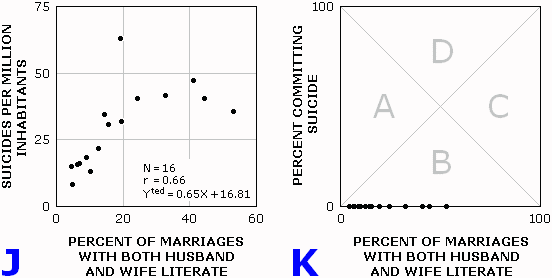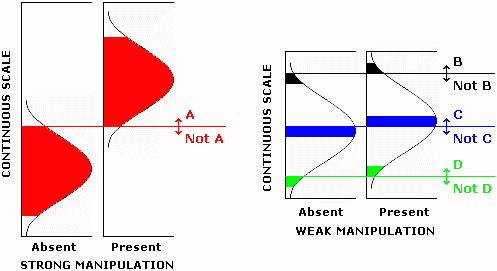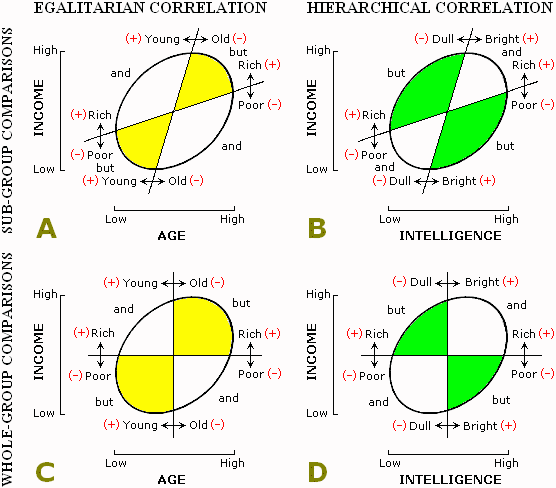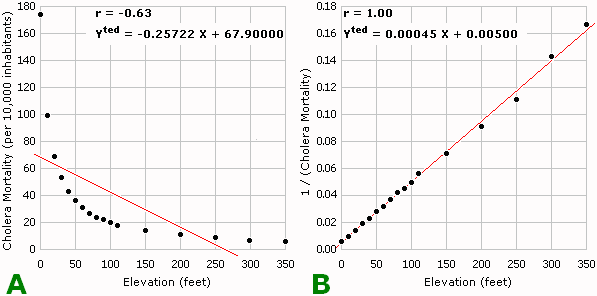
Display 5-14. Alternative portrayals of an ecological correlation between literacy and suicide over 16 Italian provinces (Durkeim, 1897/1951, p. 164). The Goodman square in Graph K reveals that all the data fall into Triangle B, and furthermore that the data points effectively fall on the X-axis, a configuration which, though yielding a very precise estimate of the individual correlation, is unhelpful because that estimate spans zero.


